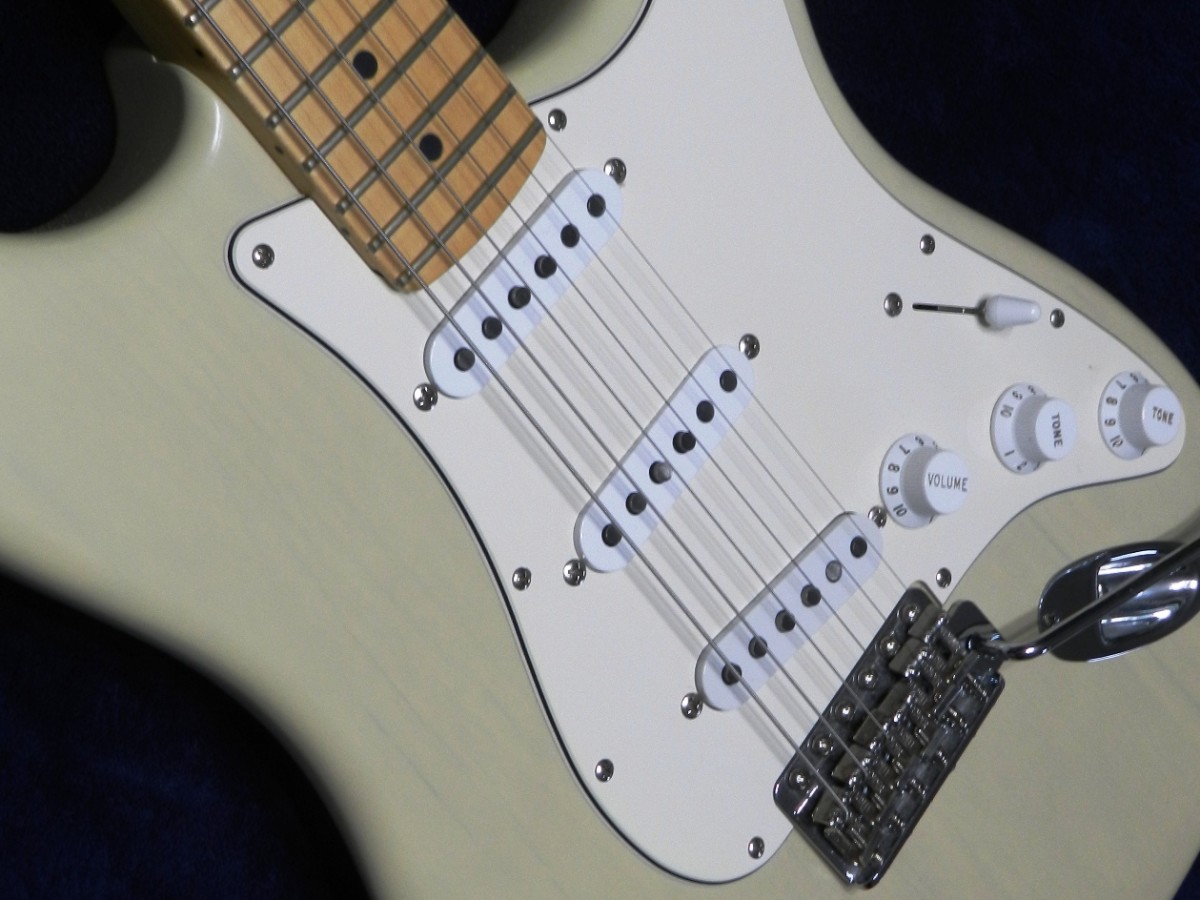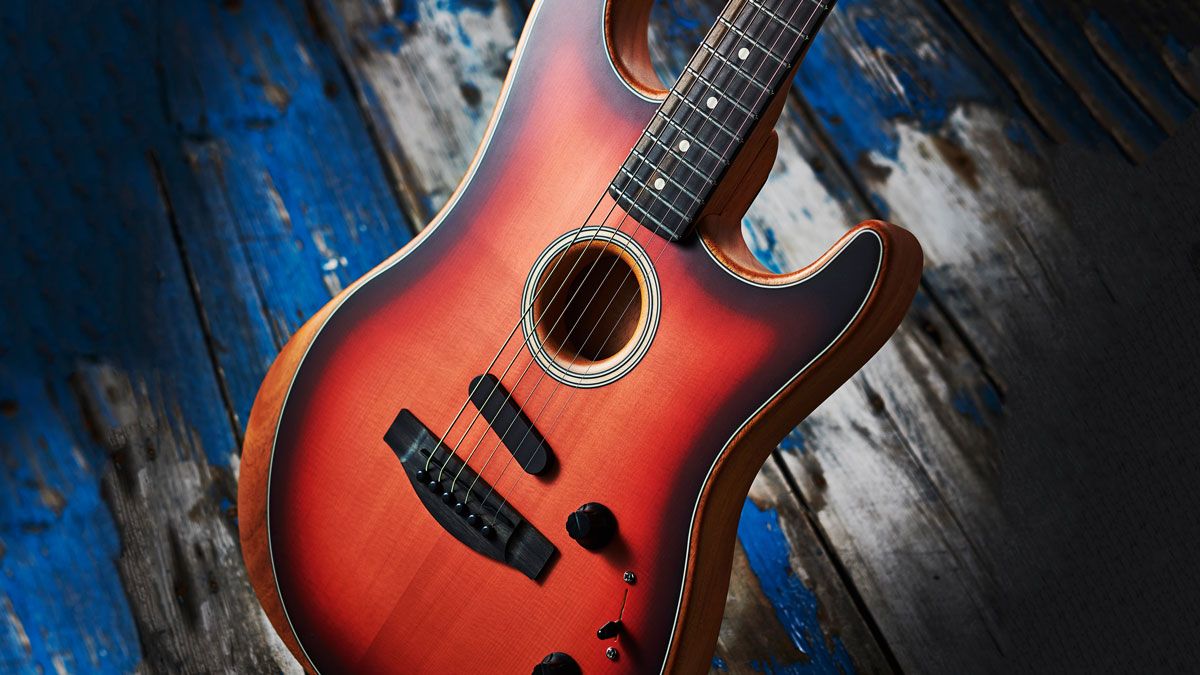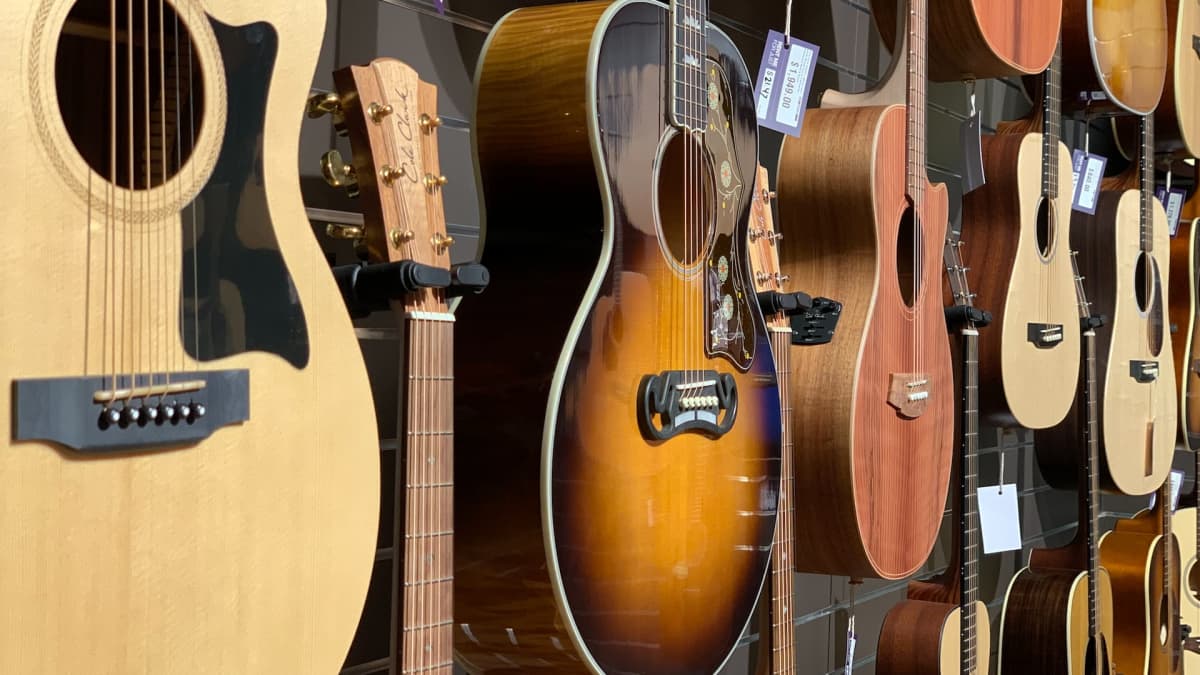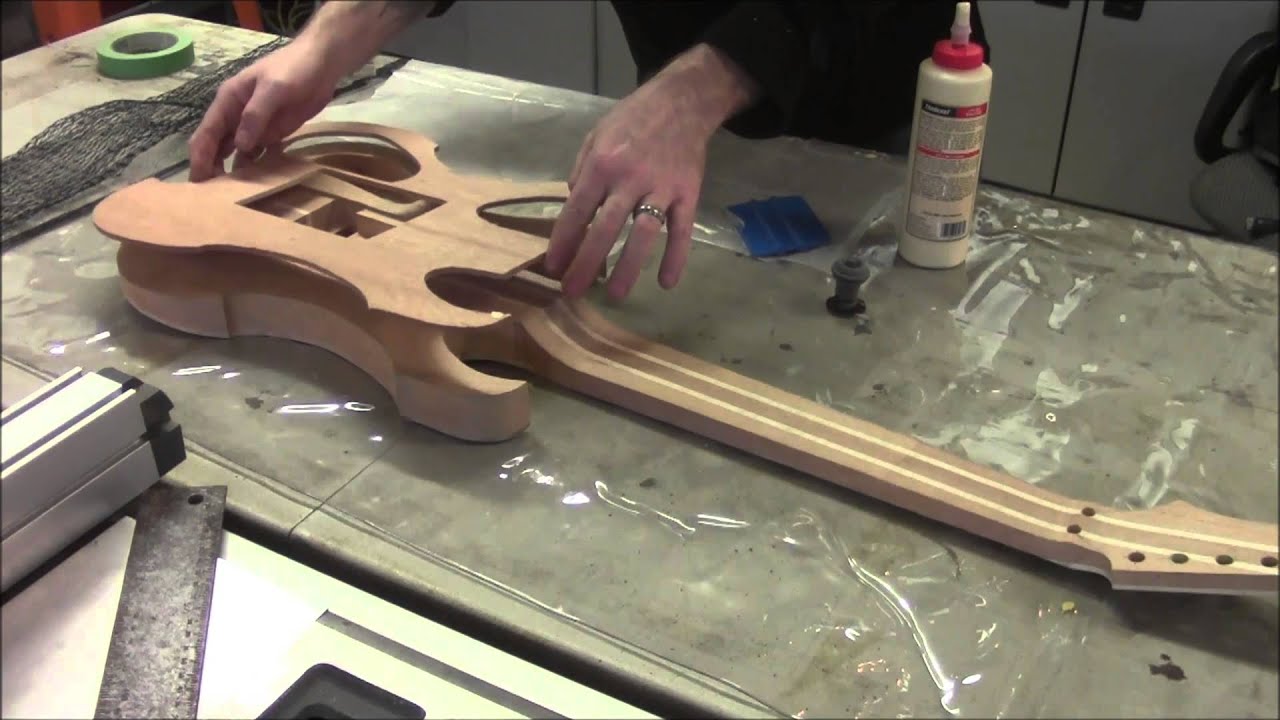Introduction
Electric guitars have become iconic instruments in the world of music, captivating audiences with their versatility and distinctive sound. These instruments are a staple in various music genres, from rock and blues to pop and jazz. Understanding the components of an electric guitar is crucial for enthusiasts and musicians alike. This knowledge not only fosters a deeper appreciation for the instrument but also provides insights into how different elements contribute to its unique tonal characteristics.
Exploring the anatomy of an electric guitar unveils a fascinating blend of craftsmanship and engineering. From the body and neck to the pickups and tuning pegs, each component plays a pivotal role in shaping the instrument's sonic identity. Delving into the construction of an electric guitar offers a glimpse into the intricate details that culminate in a harmonious marriage of artistry and functionality.
In this comprehensive guide, we will dissect the various elements that constitute an electric guitar, shedding light on the materials and mechanisms that define its sonic capabilities. By examining the body, neck, fretboard, pickups, bridge, and tuning pegs, we aim to unravel the inner workings of this beloved instrument, providing a holistic understanding of its construction and design. Whether you're an aspiring guitarist, a seasoned musician, or simply an enthusiast with a passion for music, delving into the intricacies of an electric guitar promises to be an enlightening journey.
The Body
The body of an electric guitar serves as the foundation for its aesthetic appeal and sonic resonance. Typically crafted from wood, the body plays a pivotal role in shaping the instrument’s tonal characteristics and overall feel. Common woods used in electric guitar bodies include mahogany, alder, ash, maple, and basswood, each imparting distinct tonal properties and visual textures.
Furthermore, the body design significantly influences the guitar’s ergonomics and playability. The curvature and contours of the body not only contribute to the instrument’s visual allure but also impact its comfort and balance when held by the player. Whether it’s the classic double-cutaway design of a Stratocaster or the iconic single-cut silhouette of a Les Paul, the body’s shape and construction are integral to the guitar’s identity.
Additionally, the body houses crucial components such as the bridge, pickups, and control knobs, all of which are essential for shaping the instrument’s sound and facilitating tonal adjustments. The resonance and sustain of an electric guitar are deeply intertwined with the body’s construction, making it a cornerstone of the instrument’s sonic character.
As we delve into the anatomy of an electric guitar, the body emerges as a canvas where craftsmanship and functionality converge, laying the groundwork for the instrument’s sonic prowess and visual allure. Understanding the nuances of the body’s composition and design is pivotal for appreciating the artistry and engineering that culminate in the creation of a truly remarkable electric guitar.
The Neck
The neck of an electric guitar is a vital component that significantly influences playability, tonal characteristics, and overall performance. Typically crafted from sturdy and resonant woods such as maple, mahogany, or rosewood, the neck serves as the primary support for the fretboard and provides a stable platform for the strings and frets.
One of the defining features of a guitar neck is its profile, which refers to the shape and contour of the back portion. Common neck profiles include C-shaped, V-shaped, and modern slim profiles, each offering distinct tactile experiences for the player. The profile not only affects the player’s comfort and grip but also contributes to the overall feel and playability of the instrument.
Furthermore, the neck’s construction often incorporates a truss rod, a metal rod embedded within the neck that allows for adjustments to counteract the tension exerted by the strings. This feature is crucial for maintaining the neck’s structural integrity and addressing issues such as fret buzzing and neck bowing, ensuring optimal playability and stability.
The fretboard, affixed to the neck, plays a pivotal role in defining the guitar’s tonal articulation and facilitating note articulation. Commonly made from materials like rosewood, ebony, or maple, the fretboard’s density and resonance significantly influence the instrument’s sustain and tonal characteristics. Additionally, the fretboard’s radius, or curvature, impacts the ease of string bending and chord voicings, further enhancing the instrument’s versatility.
As we unravel the intricacies of the electric guitar’s neck, it becomes evident that this component is not only a structural necessity but also a crucial contributor to the instrument’s sonic expressiveness and ergonomic design. Understanding the nuances of neck construction and its impact on playability and tone enriches our appreciation for the artistry and engineering that converge in the creation of a truly exceptional electric guitar.
The Fretboard
The fretboard, also known as the fingerboard, is a fundamental element of an electric guitar, serving as the tactile interface for the player and playing a crucial role in defining the instrument’s tonal articulation and playability. Typically crafted from dense and resonant woods such as rosewood, ebony, or maple, the fretboard’s material and construction significantly influence the guitar’s sonic characteristics and aesthetic appeal.
One of the defining features of a fretboard is its radius, which refers to the curvature of the fretboard surface. Common fretboard radii include flat (no curvature), compound (gradually flattening from the nut to the higher frets), and vintage (gentle curvature), each offering distinct playing experiences and string action dynamics. The fretboard’s radius directly impacts the ease of string bending, chord voicings, and overall comfort for the player.
Additionally, the fretboard houses the frets, thin metal strips embedded into the wood at precise intervals, which enable the player to produce different pitches by pressing the strings against them. The placement and condition of the frets play a crucial role in intonation, note accuracy, and overall playability, making fretwork and maintenance essential for ensuring optimal performance.
Moreover, the fretboard’s density and resonance contribute to the instrument’s sustain and tonal characteristics, influencing the way notes ring out and resonate. The choice of fretboard material, coupled with the neck construction, plays a pivotal role in shaping the guitar’s sonic identity and responsiveness, making it a critical factor in the instrument’s overall tonal palette.
As we explore the intricacies of the fretboard, it becomes evident that this component is not merely a physical platform for fretting notes but a dynamic element that profoundly impacts the instrument’s playability, tonal expressiveness, and ergonomic design. Understanding the nuances of fretboard construction and its influence on the instrument’s sonic and tactile characteristics enriches our appreciation for the craftsmanship and engineering that converge in the creation of a truly exceptional electric guitar.
The Pickups
At the heart of an electric guitar’s sonic signature lie the pickups, magnetic devices that capture string vibrations and convert them into electrical signals, ultimately shaping the instrument’s tonal characteristics and articulation. Typically positioned beneath the strings, pickups play a pivotal role in defining the guitar’s sound and are available in various configurations, each offering distinct tonal profiles and sonic versatility.
Common types of pickups include single-coil and humbucker pickups, each exhibiting unique tonal characteristics and noise-cancelling properties. Single-coil pickups, known for their bright and articulate sound, are revered for their clarity and presence, making them a popular choice in genres such as blues, rock, and surf music. On the other hand, humbucker pickups, characterized by their warm and robust tone, excel in delivering rich harmonic content and are favored in genres that demand a heavier, more saturated sound, such as hard rock and heavy metal.
Furthermore, the placement of pickups along the guitar’s body significantly influences the instrument’s tonal nuances. Bridge pickups tend to deliver a brighter and more aggressive sound, ideal for lead playing and rhythm dynamics, while neck pickups produce a warmer and rounder tone, well-suited for expressive solos and melodic passages. Additionally, the middle position, which activates both pickups simultaneously, offers a balanced and versatile tonal palette, providing a wide array of sonic possibilities.
Moreover, the wiring configuration and pickup switching mechanisms, often controlled by the guitar’s selector switch and tone knobs, allow players to access various pickup combinations, further expanding the instrument’s sonic versatility and tonal palette. This flexibility empowers guitarists to sculpt their desired sound, from crisp and twangy to thick and creamy, enhancing the instrument’s expressive capabilities.
As we uncover the intricacies of electric guitar pickups, it becomes evident that these magnetic transducers are not merely technical components but sonic alchemists that imbue the instrument with its unique voice and expressive potential. Understanding the nuances of pickup design, placement, and tonal characteristics enriches our appreciation for the artistry and engineering that converge in the creation of a truly exceptional electric guitar.
The Bridge
The bridge of an electric guitar is a critical component that not only anchors the strings but also plays a pivotal role in shaping the instrument’s intonation, sustain, and tonal characteristics. Whether it’s a fixed bridge, tremolo bridge, or tune-o-matic bridge, this element significantly influences the guitar’s playability, tuning stability, and sonic expressiveness.
One of the primary functions of the bridge is to secure the strings at the body end of the instrument, providing the necessary tension for producing clear and resonant notes. Additionally, the bridge’s design and construction impact the instrument’s sustain, with certain configurations enhancing the string-to-body coupling and promoting prolonged note decay, contributing to the guitar’s overall resonance and tonal richness.
Furthermore, bridges with adjustable saddles allow for precise intonation adjustments, ensuring that each string produces accurate pitches across the fretboard. This feature is crucial for maintaining the instrument’s tuning consistency and harmonic integrity, providing the player with a reliable and responsive platform for musical expression.
For guitars equipped with tremolo bridges, the inclusion of a vibrato system enables players to manipulate pitch through subtle or dramatic pitch bends, adding a dynamic dimension to their playing. This feature empowers guitarists to infuse their performance with expressive vibrato and shimmering pitch modulations, expanding the instrument’s sonic palette and emotive capabilities.
Moreover, the choice of bridge material, such as steel, brass, or titanium, can impact the instrument’s tonal characteristics, with different metals offering varying degrees of brightness, sustain, and harmonic overtones. Additionally, the bridge’s mass and construction contribute to the instrument’s resonance and sustain, shaping the guitar’s sonic identity and responsiveness.
As we explore the intricacies of the electric guitar’s bridge, it becomes evident that this component is not merely a structural fixture but a dynamic element that profoundly influences the instrument’s playability, tonal expressiveness, and sonic character. Understanding the nuances of bridge design, functionality, and tonal impact enriches our appreciation for the craftsmanship and engineering that converge in the creation of a truly exceptional electric guitar.
The Tuning Pegs
The tuning pegs, also known as machine heads or tuning machines, are essential components of an electric guitar, responsible for adjusting the tension and pitch of the strings, thereby ensuring accurate tuning and stable intonation. These precision gears play a crucial role in maintaining the instrument’s pitch stability, allowing players to achieve and sustain the desired tuning for optimal performance and sonic clarity.
Typically situated on the guitar’s headstock, the tuning pegs are designed to securely anchor the strings while providing the means for precise tuning adjustments. The gear ratio of the tuning pegs determines the degree of control and accuracy in pitch adjustment, with higher gear ratios allowing for finer tuning adjustments, essential for achieving precise intonation across the fretboard.
Furthermore, the material and construction of the tuning pegs significantly impact the instrument’s tuning stability and overall performance. High-quality tuning pegs, often crafted from materials like stainless steel, aluminum, or nickel, offer enhanced durability and reliable tuning precision, contributing to the instrument’s playability and tonal consistency.
Additionally, the design of the tuning pegs, whether traditional open-gear or modern enclosed models, influences the instrument’s aesthetic appeal and ergonomic functionality. Enclosed tuning pegs, also known as sealed gear tuners, provide enhanced protection against environmental factors and debris, contributing to the longevity and reliability of the tuning system.
Moreover, the installation of locking tuners, a specialized type of tuning pegs that clamp the strings in place, offers improved tuning stability and quicker string changes, catering to the demands of performance and studio musicians who require rapid and precise tuning adjustments during live shows and recording sessions.
As we delve into the intricacies of the electric guitar’s tuning pegs, it becomes evident that these seemingly modest components are integral to the instrument’s playability, tonal integrity, and overall performance. Understanding the nuances of tuning peg design, functionality, and material composition enriches our appreciation for the craftsmanship and engineering that converge in the creation of a truly exceptional electric guitar.
Conclusion
Exploring the intricate components that constitute an electric guitar unveils a captivating fusion of artistry and engineering, each element contributing to the instrument’s sonic identity and playability. From the resonant body and ergonomic neck to the expressive pickups and precision tuning pegs, every facet of the electric guitar’s construction embodies a harmonious blend of form and function.
The body, crafted from select woods and adorned with elegant contours, serves as the canvas upon which the instrument’s sonic journey unfolds. Its resonance, balance, and visual allure lay the foundation for the guitar’s tonal character and aesthetic appeal, embodying the marriage of craftsmanship and sonic potential.
The neck, with its profile, fretboard, and truss rod, emerges as a testament to ergonomic design and tonal articulation, providing a stable and expressive platform for musical exploration. Its construction and material selection significantly influence the instrument’s playability, tonal richness, and expressive capabilities.
The fretboard, adorned with precision frets and resonant wood, stands as the tactile conduit for musical expression, facilitating note articulation and tonal nuance. Its radius, material, and craftsmanship contribute to the instrument’s playability, tonal expressiveness, and sonic versatility.
The pickups, magnetic transducers that capture the instrument’s vibrations, embody the electric guitar’s voice and emotive potential. Their design, placement, and tonal characteristics shape the instrument’s sonic palette, offering a diverse range of tonal colors and expressive possibilities.
The bridge, anchoring the strings and shaping the instrument’s intonation and sustain, stands as a testament to precision engineering and tonal refinement. Its design, material, and functionality contribute to the guitar’s tuning stability, tonal richness, and expressive potential.
Finally, the tuning pegs, precision gears that maintain the instrument’s pitch stability, embody the commitment to sonic precision and performance reliability. Their design, material, and functionality ensure the guitar’s tuning accuracy and tonal consistency, providing the player with a reliable platform for musical expression.
As we reflect on the myriad components that define an electric guitar, it becomes evident that each element is not merely a technical fixture but a testament to the artistry, innovation, and craftsmanship that converge in the creation of a truly exceptional instrument. Understanding the intricacies of an electric guitar’s construction enriches our appreciation for the music it creates and the craftsmanship that brings it to life.

























